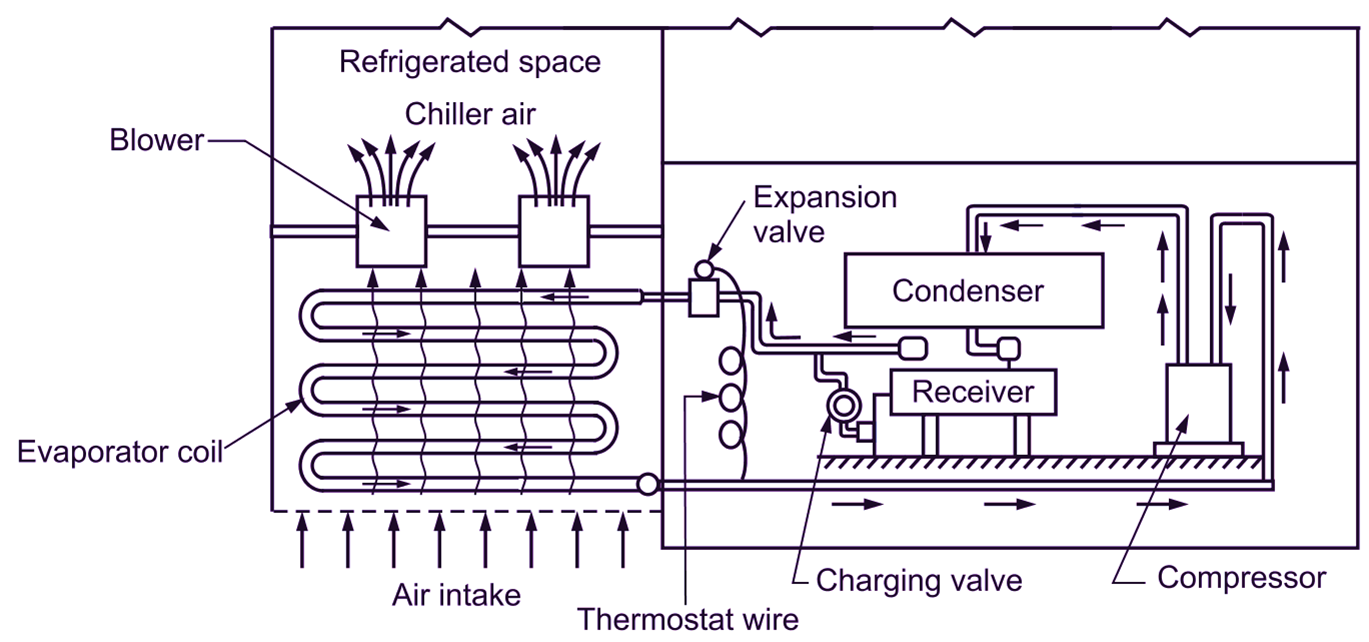Cold storage is a building designed to store certain goods, like foods of perishable nature. The inside space of cold storage is maintained at required temperature and relative humidity. Cold storage is an application of refrigeration and air conditioning. In cold storage, temperature (+20°C to – 100°C) relative humidity (from and 95% to very low level) can be maintained. The condition of temperature and humidity to be maintained depends upon the type of stored product. Storage of vegetables requires a temperature of around 0° to 5°C with high relative humidity of 80 to 90%. Similarly, the temperature required for milk processing and quick freezing of fish is 4 to 5°C, -30°C respectively. The plant is required to be operated throughout the year with wide fluctuations in load.

Figure 1: Cold Storage.
Construction of Cold Storage
Fig. 1 shows the layout of a cold storage system consisting of four essential components: (1) Compressor, (2) Condenser, (3) Expansion device, and (4) Evaporator. Reciprocating compressors with flood mounted Air Handling Units (AHU) with finned or bare tube cooling coils are used in the refrigeration plant of cold storages.
Refrigerants used: Ammonia (NH3), R-22, R-134.
Categories of Cold Storage
Cold storage is divided into two categories:
- Cold storages for product, which can be protected at temperatures of 0°C and above.
- Low temperature applications requiring subzero (below 0°C) temperature for preservation of certain commodities.
The food products can be stored for periods ranging from fifteen days to several months. Even though, does not improve the quality of foods products; but its ability to slow down the deterioration rate, makes possible to preserve them for long duration.
Advantages of Cold Storage
The following are the main advantages of cold storage:
- Substances such as potatoes, butter etc. can be stored, when their supply is more than demand in market. The stored substances can be sold out during less supply of substances due to adverse environment effects or any other reason and demand in the market can be fulfilled, that too at reasonable price.
- Due to reduction of spoilage, great saving is made.
- Transportation of perishable commodities from distant places (located at large distances) is made possible.